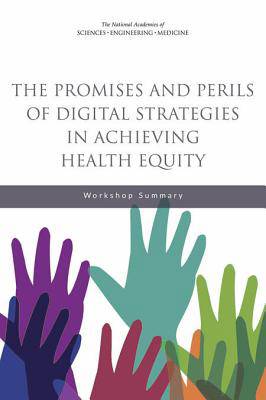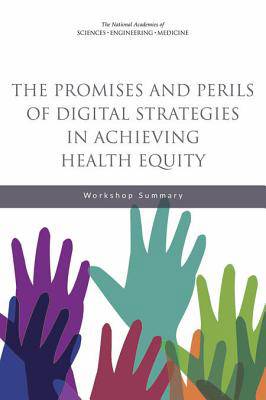
- Afhalen na 1 uur in een winkel met voorraad
- Gratis thuislevering in België
- Ruim aanbod met 7 miljoen producten
- Afhalen na 1 uur in een winkel met voorraad
- Gratis thuislevering in België
- Ruim aanbod met 7 miljoen producten
The Promises and Perils of Digital Strategies in Achieving Health Equity
Workshop Summary
National Academies of Sciences Engineering and Medicine, Health and Medicine Division, Board on Population Health and Public Health Practice, Roundtable on the Promotion of Health Equity and the Elimination of Health DisparitiesOmschrijving
Health care is in the midst of a dramatic transformation in the United States. Spurred by technological advances, economic imperatives, and governmental policies, information technologies are rapidly being applied to health care in an effort to improve access, enhance quality, and decrease costs. At the same time, the use of technologies by the consumers of health care is changing how people interact with the health care system and with health information.
These changes in health care have the potential both to exacerbate and to diminish the stark disparities in health and well-being that exist among population groups in the United States. If the benefits of technology flow disproportionately to those who already enjoy better coverage, use, and outcomes than disadvantaged groups, heath disparities could increase. But if technologies can be developed and implemented in such a way to improve access and enhance quality for the members of all groups, the ongoing transformation of health care could reduce the gaps among groups while improving health care for all.
To explore the potential for further insights into, and opportunities to address, disparities in underserved populations the National Academies of Sciences, Engineering, and Medicine held a workshop in October 2014. The workshop focused on (1) how communities are using digital health technologies to improve health outcomes for racial and ethnic minority populations, (2) how community engagement can improve access to high-quality health information for members of these groups, and (3) on models of successful technology-based strategies to reduce health disparities. This report summarizes the presentations and discussions at the workshop.
Specificaties
Betrokkenen
- Auteur(s):
- Uitgeverij:
Inhoud
- Aantal bladzijden:
- 82
- Taal:
- Engels
Eigenschappen
- Productcode (EAN):
- 9780309438919
- Verschijningsdatum:
- 22/07/2016
- Uitvoering:
- Paperback
- Formaat:
- Trade paperback (VS)
- Afmetingen:
- 152 mm x 229 mm

Alleen bij Standaard Boekhandel
Beoordelingen
We publiceren alleen reviews die voldoen aan de voorwaarden voor reviews. Bekijk onze voorwaarden voor reviews.












